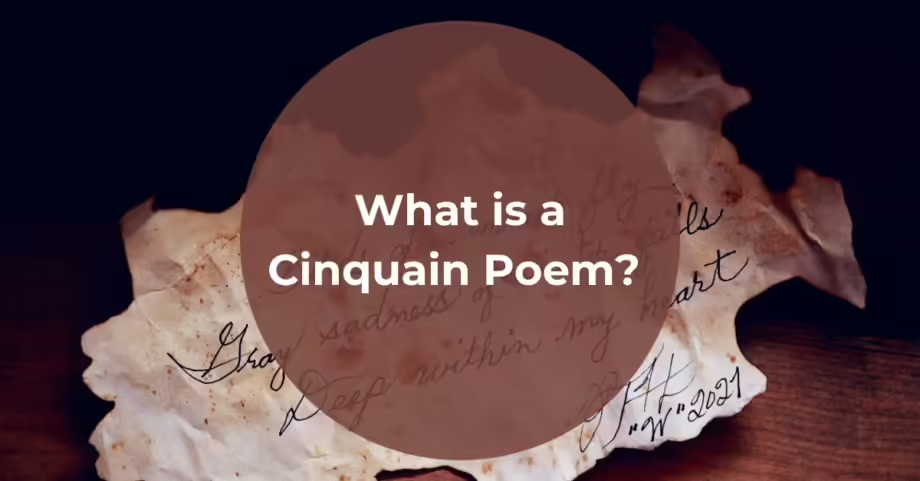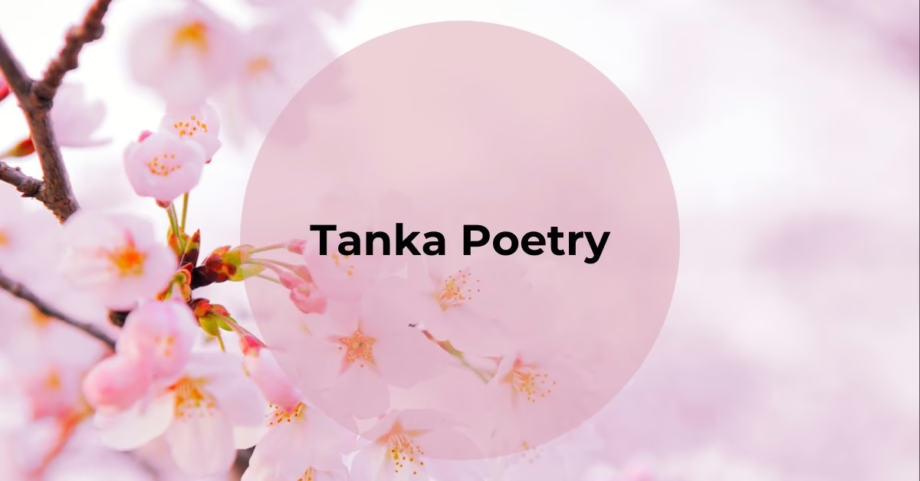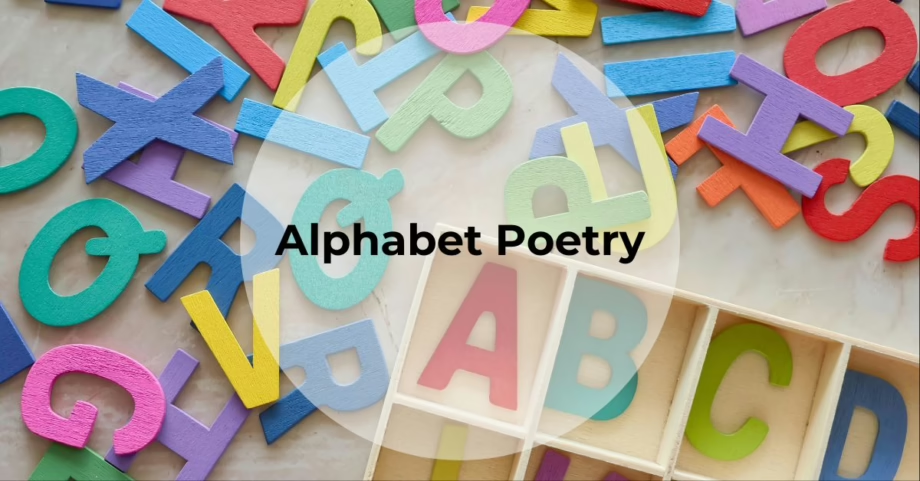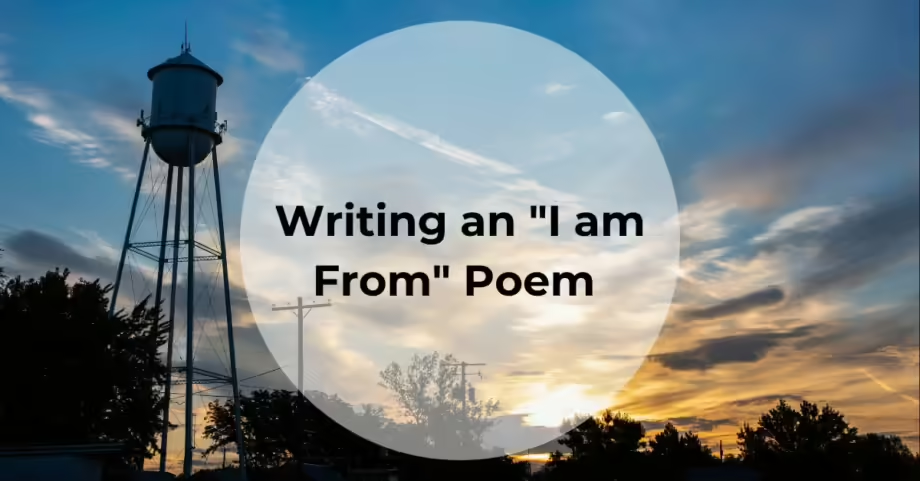Cinquain poems have a simple form but a unique structure. Known for their concise beauty, cinquains appeal to poets, students, and educators alike, offering a way to explore language with brevity and precision.
In this article, we’ll explore the history, types, and practical uses of cinquain poetry while giving tips for writing your own.
What are Cinquain Poems?
The term “cinquain” comes from the French word “cinq,” which means five. Historically, the cinquain was a five-line stanza in medieval French poetry, though the modern version has taken on a life of its own.
Today, the cinquain is appreciated for its elegance and versatility across both creative and educational contexts.
Cinquain Poem Rules & Structure
The cinquain may initially seem straightforward—five lines and a few syllables. However, different styles introduce various challenges. Here are some of the most well-known forms:
American Cinquain
Developed by Adelaide Crapsey, this version has a strict syllable pattern:
- Line 1: 2 syllables
- Line 2: 4 syllables
- Line 3: 6 syllables
- Line 4: 8 syllables
- Line 5: 2 syllables
This structure allows poets to focus on vivid imagery and precise language. Each word must carry weight within the poem’s limited space.
Didactic Cinquain
Often used in classrooms, the didactic version focuses on word count rather than syllables, making it ideal for teaching grammar and creative expression. Its structure is:
- Line 1: One word (subject)
- Line 2: Two adjectives
- Line 3: Three action verbs
- Line 4: Four descriptive words or a phrase
- Line 5: A synonym or reference to the subject
This simple, educational variation encourages students to experiment with vocabulary and descriptive language.
Reverse, Butterfly, and Crown Cinquains
For more experienced poets, there are several creative twists on the form:
- Reverse Cinquain: Follows the same syllable pattern but in reverse (2-8-6-4-2).
- Butterfly Cinquain: Combines two cinquains, with the second mirroring the first.
- Crown Cinquain: Comprises five interlinked cinquains, each standing alone while contributing to a larger whole.
Cinquain Poem Examples
Adelaide Crapsey’s work is often cited as the benchmark for American cinquain poetry. One of her well-known pieces is titled “Triad,” which juxtaposes quiet imagery to evoke powerful emotions. Such poems show how cinquains rely on concise language and imagery to convey meaning in just five lines.
Triad by Adelaide Crapsey
These be
Three silent things:
The falling snow…the hour
Before the dawn…the mouth of one
Just dead.
November Night by Adelaide Crapsey
Listen…
With faint dry sound,
Like steps of passing ghosts,
The leaves, frost-crisp’d, break from the trees
And fall.
To Helen by Edgar Allen Poe
Helen, thy beauty is to me
Like those Nicean barks of yore,
That gently, o’er a perfumed sea,
The weary, way-worn wanderer bore
To his own native shore.
How to Write a Cinquain Poem
Following these steps will help you create your own cinquain poems:
- Pick a Topic: Start with a subject that inspires you. It could be a person, a season, or an abstract concept like hope or fear.
- Decide on a Form: Choose between the American or didactic cinquain, or try one of the creative variations. Knowing the structure in advance will guide your word choices.
- Craft Imagery and Juxtaposition: Cinquains rely heavily on imagery. For example, describing snow as “silent” and “before the dawn” evokes tranquility and anticipation. Use contrasts and juxtapositions to make your poem resonate emotionally.
- Tinker with Syllables or Words: Pay close attention to the syllable count (or word count for didactic cinquains). Every word matters, so experiment with phrasing until the poem flows smoothly.
- Refine and Edit: Once your cinquain is complete, read it aloud. Adjust any awkward phrases and ensure the poem aligns with the chosen structure.
Practical Uses of Cinquains in Education
Cinquain poetry is a popular tool in classrooms due to its simplicity and structure. Teachers often use didactic cinquains to teach grammar, vocabulary, and creative thinking. The poem’s brevity makes it accessible for students of all ages, and the focus on description encourages thoughtful word choice.
Beyond education, cinquains are perfect for quick poetic challenges, journal entries, or even Instagram poetry, where brevity is key. They offer a way for poets to express complex emotions in just a few lines, making them ideal for modern, fast-paced communication.
Explore the Power of Cinquain Poetry
The cinquain may be small, but it is mighty. Whether you are a seasoned poet or a beginner exploring new forms, cinquain poems offer an excellent opportunity to experiment with language and imagery. With various forms and endless topics to explore, you’ll find that writing cinquains is both a challenge and a delight.
So, grab a pen and try your hand at this five-line wonder. Whether you stick to the strict syllable pattern of the American cinquain or explore creative variations, the process will help you refine your writing skills and deepen your appreciation for poetry.
Have a cinquain poem to share? Submit to our magazine.
Tanka Poetry: History, Structure, and How to Write Your Own
Tanka poetry is a traditional Japanese poetic form known for its brevity, emotional depth, and…
Alphabet Poetry: How to Craft Engaging Poems From A to Z
Alphabet poetry, sometimes called abecedarian poetry, is a fun form of creative writing that uses…
I am From Poems & How to Write One
Poets often reflect on the places they came from. An origin poem, of sorts. Made…
Concrete Poetry: Where Writing & Art Merge
Writers always look for ways to push boundaries, combining forms and experimenting with genres. Concrete…
What is a Cinquain Poem? A Guide to the Five-Line Wonder
Cinquain poems have a simple form but a unique structure. Known for their concise beauty,…
What is Ballad Poetry?
The allure of ballad poetry lies in in its ability to tell a story and in its…






